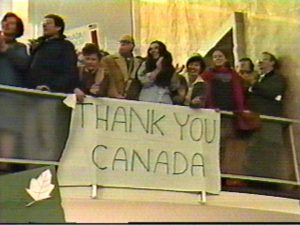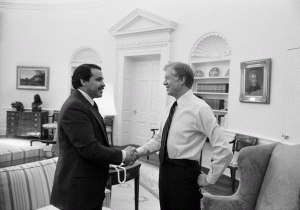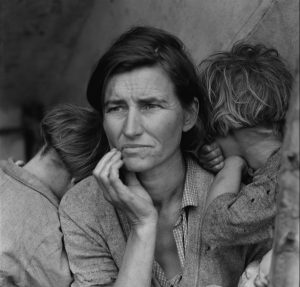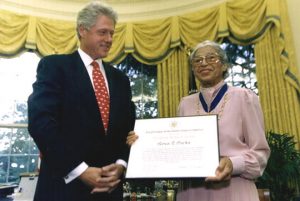In mid-December of 1979, one man carried the weight of the world on his shoulders: Tony Mendez. On what seemed to be an ordinary day, especially during chaotic times, Mendez sat at his desk, exhausted. Suddenly, his coworker barged into his office, holding a sheet of paper. “Have you seen this? Some Americans have escaped from the embassy in Tehran.” He seemed shocked as Mendez himself had been, when he heard that anyone had managed to get out.1
Of course, this wasn’t the first time Mendez had heard the news. Earlier that day, he’d come across a memo addressed to the CIA’s central cover staff asking for some input on a potential rescue operation to get the six Americans who had made it out of the embassy in Tehran that had been taken hostage. They were now in hiding with the Canadians in Tehran. While Mendez and his coworkers looked at it, they were not asked to lead a mission, and so while it was interesting at the time, it didn’t seem as urgent compared to the hostage crisis. And so it sat in the back of Mendez’s mind while he continued to work on other things.2
A couple days after Mendez had received this news, rumors had begun to spread in Tehran that some of the Americans had managed to escape. While the U.S government decided to take the wait and see approach, Mendez believed that that wasn’t the best choice anymore. From there, Mendez simply couldn’t get it off his mind. He believed that there were some people who had escaped and it wouldn’t be long before the Americans were found. He knew, once that happened, there would be no saving them. And so he went home with this looming over his head. Once home, he sat down to paint as he always had done, and when he was cleaning up his station, the plan came to him. He knew that they would need to make new identities and disguises for the Americans, but someone would have to be sent in to Tehran to help ensure that whatever escape they decided on could be pulled off.3 All that was left was for him to find the perfect cover story that would work for the rescue. He knew that it had to be one that no one could find, not even a single crack, or else everything could go wrong. It wasn’t until a couple of days later that it hit Mendez. What if, rather than disguising themselves as tourists or something else, they were filmmakers instead?
With that cover story, Mendez felt the need to act before it was too late, because if they waited any longer, it could mean the end of six lives. The urgency to act only continued to grow when things in Tehran became direr. Iranian authorities had launched an aggressive search to find the six Americans. Mendez could feel time slipping away, and with each passing second, his worry grew more. They needed to act fast. Mendez knew all too well what could happen if they waited too long. So, he got to work putting the plan into motion. He and his team had a huge task ahead of them. Their first task was to find the safest route out of the country. The best option was a commercial flight out of Mehrabad Airport. The next step was securing identification documents for the six Americans and those who would be accompanying them in Tehran to ensure that things ran smoothly. Mendez and his team reached out to the Canadian government, and to their surprise, the Canadians had already begun preparing Canadian passports for the Americans.4
The only issue was that those agents sent out on that mission had to find their own identification separately. So Mendez and his team added the necessary photos to the Canadian documents. Once that was squared away, they could begin finalizing the cover story.5 Mendez decided it was time to reach out to an old friend of his, Jerome Calloway, for help in developing the fake movie production plan. It was with Calloway’s help that they decided the group would pose as a Hollywood location scouting team. There was only one issue: a typical scouting team had no more than eight people. Maybe it was in that moment that Mendez realized that he would have to go on the mission himself especially when there was so much at stake.
There was still so much to do to make sure that no matter what happened, everything would go smoothly. To ensure this, Mendez and his team created backup documents in case anything went wrong. To ensure this, that meant that the fake production company had become legitimate. To Hollywood, Mendez went to line up the final touches to the cover story.6 There, Calloway introduced him to Bob Sidell, who helped tune up all the little details. Together, they created “Studio Six Productions,” a name chosen to honor the six Americans in hiding. At this time, they also selected a real film script to ensure the story was believable. The chosen script was a strange sci-fi story that Mendez believed would be confusing enough to fool the Iranians. The name of the film? Argo.
With everything ready, Mendez and Ed Johnson, or as their cover names Kevin and Julio, flew to Tehran. On January 25, 1980, they landed in the very airport that a few days later would be used for the escape of the century. Once landed, he began to explain the plan to them, explaining every detail carefully. It was now up to them to decide what role they would play, which was a difficult task, especially since some had no clue about what role would work best for them. After some time, the roles were decided, and it was time to get into character. The next day, Mendez began to put them there an excruciating amount of practice, all to ensure that these roles were engraved into them. Even with all the practice, the task would not get any easier, especially when you add fear into the equation.7
Then, on the morning of January 28, the group prepared to depart the home they had been hiding in, with hopes that they could make it home. Before leaving, Mendez reminded them that their survival depended on how convincingly they played their parts today. They piled into the van and headed to the airport. Once inside the airport, relief hit Mendez. They had made it inside. All that was left were the serious checkpoints, but if they stuck to the plan, all would go well.
Everything seemed to be going smoothly; they had made it through terminal security. All that was left was to board the plane. Only the plan of sticking together didn’t go like they planned. You see, they were supposed to get into the line to board for smokers, because the long line would be the best line so as to not stick out. Only, Lee, one of the Americans, accidentally got into the non-smoker line. The moment Mendez realized this, his head began to fill with all that could go wrong. He did his best to watch the situation and hoped all went smoothly. As Lee approached the immigration officer, he handed over his passport, and that was when everything went wrong. With the passport in his hand, the officer began to stare at it, and this lasted a while, causing the rest of the group to watch in fear, thinking this was it, that they had been caught. Suddenly, the officer spoke up, “This does not look like you.” Lee hesitated but quickly came up with a response. He explained that it was due to his mustache that he looked so different. He did his best not to sound nervous, but it was not unnoticeable. One could only hope the officer did not catch on to it. Somehow, though, the officer just shrugged and stamped the passport, letting him go.8
With Lee on board, all that was left was to hope that everyone else’s boarding went well. Everything from there went smoothly, and each one of them made it onto the plane. All that was left was to wait for takeoff. In those moments of waiting, they couldn’t help but glance at one another, amazed at how far they made it. They were just seconds away from taking off from Tehran and being in the air, heading home. The moments they spent waiting felt like an eternity, until finally the plane began to take off. Finally, they had made it back home to America.

the safe return | Press Conference at the Department of
State| February 2, 1980 | Published by U.S Department of
State| Courtesy of Wikimedia Commons
Once news broke that the six Americans who had escaped the embassy in Tehran were safely back home, news outlets exploded with coverage. All credit for the rescue was given to the Canadian government, even going so far that the mission was named the “Canadian Caper.”9

United States as a result of the Canadian Caper | 1980 |
United States State Department | Courtesy of Wikimedia
Commons
With the Canadian government being given all the credit, the true masterminds remained in the shadows. Mendez and his team had been given no credit for their hard work, being forced to keep their role in the mission a secret. The main heroes of the story were forced to go unnoticed, and their efforts were written out of history. It was not until the U.S government declassified the mission that Mendez and his team had finally received some recognition for their contributions. This newfound praise brought a mix of emotions. The years that Mendez had spent hiding his role in the mission, as well as the other work he had done for the CIA, must have taken a toll on him. I wonder if, in the end, it was all worth it for him and his team to have to hide so much of what made them who they were a secret. Their bravery went so far beyond the missions they completed to the quiet sacrifices they made in their own lives, especially when it came to keeping everything they did a secret. In the end, they saved lives, and made history. Only much of their courage still remains unknown, even with the case being declassified.

Tony Mendez for his role in the rescue operation | March 12
1980 | CIA| Courtesy of Wikimedia Commons
- Antonio J. Mendez and Matt Baglio, Argo: How the CIA and Hollywood Pulled off the Most Audacious Rescue in History (New York: Viking, 2012), 67. ↵
- Antonio J. Mendez and Matt Baglio, Argo: How the CIA and Hollywood Pulled off the Most Audacious Rescue in History (New York: Viking, 2012), 69. ↵
- Antonio J. Mendez and Matt Baglio, Argo: How the CIA and Hollywood Pulled off the Most Audacious Rescue in History (New York: Viking, 2012), 13. ↵
- Antonio J. Mendez and Matt Baglio, Argo: How the CIA and Hollywood Pulled off the Most Audacious Rescue in History (New York: Viking, 2012), 89. ↵
- Antonio J. Mendez and Matt Baglio, Argo: How the CIA and Hollywood Pulled off the Most Audacious Rescue in History (New York: Viking, 2012), 98. ↵
- Antonio J. Mendez and Matt Baglio, Argo: How the CIA and Hollywood Pulled off the Most Audacious Rescue in History (New York: Viking, 2012), 114. ↵
- Antonio J. Mendez and Matt Baglio, Argo: How the CIA and Hollywood Pulled off the Most Audacious Rescue in History (New York: Viking, 2012), 116. ↵
- Antonio J. Mendez and Matt Baglio, Argo: How the CIA and Hollywood Pulled off the Most Audacious Rescue in History (New York: Viking, 2012), 166. ↵
- Robert Wright, Our Man in Tehran: The True Story behind the Secret Mission to Save Six Americans during the Iran Hostage Crisis and the Foreign Ambassador Who Worked with the CIA to Bring Them Home (Toronto:HarperCollins Canada, 2011), 90. ↵




4 comments
Alejandro Rubio Chappell
This was a fascinating and intense retelling of Mendez’s mission. I really appreciated how you captured the mental weight he carried throughout the operation. Small moments—like Lee’s quick thinking about his mustache and the clever naming of “Studio Six”—really made the story feel real and immersive. It’s amazing they pulled it off and remained uncredited for so many years despite the risks involved.
TJ
What a captivating account of the CIA’s daring rescue mission in Tehran. The author does a great job of building suspense, especially as Mendez conceives the Hollywood cover story and during the tense airport escape. Detailing the initial inaction, Mendez’s pivotal idea, and the collaboration with Canada effectively highlights the ingenuity and high stakes of the operation. The author also thoughtfully considers the personal sacrifices made by Mendez and his team.
Micaella Sanchez
Tony Mendez’s quiet bravery struck me. Reading about his role in the Argo mission made me realize how many heroes operate in the shadows, never seeking recognition for their efforts. His story reminded me that real courage often means doing the right thing without expecting praise. I admire how Mendez used creativity and calm under pressure to save lives—his legacy deserves to be remembered and honored.
Carlos Flores
Tony Mendez and his team’s incredible work during the 1979 Tehran hostage crisis is nothing short of heroic. While the Canadian government got most of the credit, it was Mendez’s quick thinking and bold actions that made the rescue possible. It’s inspiring how they kept everything under wraps, but in the end, their bravery really shines through. True unsung heroes.